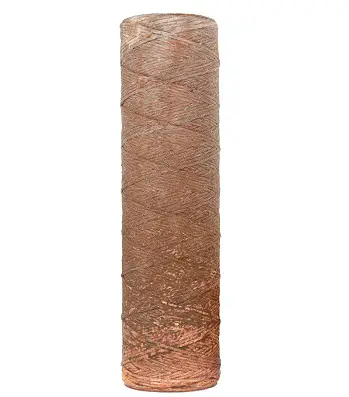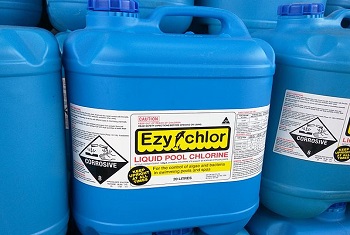A very common myth about water softeners is that they can cause a loss in water pressure. I say that this is a myth because a properly sized water softener will have virtually no effect on your water pressure at all.
Can a water softener affect water pressure? Water pressure can be affected by water flow blockage inside of a water softener due to sediment or debris that has settled in-between the softening resin or by chlorine making the resin soft so it mushes together reducing the space between the resin where water would normally flow.
How can a water softener affect water pressure?
When water flows through a water softener, there is very little resistance from the water softening resin. The water flows around the resin, not through a filter, therefore there is very little change in water pressure.
If you have chosen a properly sized water softener for your particular water demand needs, you should not notice any change in water pressure once you install the softener. When the water softener is in service and providing you softened water, you should not notice any drop in water pressure.
However! There may be times when you are using water and notice that the pressure is not what it used to be.
You may have a drop in water pressure when the water softener is regenerating.
In most cases, the only time that there will be a drop in water pressure is when your water softener is performing its regeneration process. This is the time when the water softener is using the salt from the salt tank to remove the hardness that it has removed from your water and collected in its softening tank.
During this process, the water softener is using a strong flow of water to flush the system’s tank with brine (the salty water from the salt tank) and then flush the brine away with a strong flow of freshwater.
For many water softeners, this flow of water is about the same as running a garden hose at full flow. This amount of water being used is often not enough to cause any substantial drop in the homes’ water pressure, but it may be enough for you to notice.
If you find that you do notice this drop in pressure at about the same time every few days, it is likely that the solution is that your water softeners clock is set at the incorrect time.
Most water softeners are preset from the manufacturer to perform its regeneration process at 2:00 am. This is done so that the water that the system needs to regenerate does not interfere with your normal day to day activities.
Check your water softener to make sure that the time is set correctly. If it is not, check your owner’s manual for steps to set your water softeners clock. When your water softeners clock is set correctly, your water softener should go back to regenerate at 2:00 am when most people are not using water.
How do I set my water softeners clock?
It is usually very simple to set your water softeners clock. Most water softeners with digital displays will have a clock or set button on them for setting the systems clock.
Just press the clock button until you see the hour blinking, then use the +/- or up/down buttons to set the hour and then press the clock button once more and do the same for the minutes and day if your water softener asks for it. Press the clock button again, and the display should go back to normal, and you are done.
It may be the filter that is before your water softener.

A drop in water pressure is only caused by an obstruction in the water flow or lack of pressure from the water source (your well pump or pressure tank, your municipal water supplier).
Many people that have a private well will have a certain amount of sediment come up from the well.
To capture this sediment, a sediment filter may be installed before your water softener which has a water filtering cartridge inside of it that needs to be changed when it has captured enough sediment to cause a drop in water pressure.
When this filter gets full of sediment and debris, it will most likely affect the water pressure in the home. By putting a new filter cartridge in, the normal water pressure should be restored.
If you need a new filter for your whole house filter, check out my recommended whole house filter cartridges.
These may seem like they may be difficult to do but after you change it a few times, it will become very easy for you. Make sure you follow the correct procedures when changing your water cartridge to prevent having a leaking water filter.
Your water softening resin could be impacted with debris.

If you do not have a sediment filter before your water softener, and there is some sediment coming in from your water source, this sediment can settle in-between the water softening resin inside of your water softeners tank.
Over time this sediment will block enough space between the water softener resin where it will not allow the water to flow easily pass and you will notice a loss of water pressure. If this happens, you do not need to replace the whole water softener, but the resin inside will have to be replaced.
Chlorine may have ruined your water softening resin.

Municipal water suppliers will add chlorine to the water to disinfect it against harmful organisms that are unhealthy to consume. Over time, the chlorine will be absorbed into your water softening resin.
This will cause the resin to become soft and lose its uniformity. The normally firm and ridged resin beads that have gaps between them will now mush against each other and not allow water to flow around them. Much like underinflated basketballs pushed together.
Once this happens to the resin, you will need to have the resin replaced and I highly recommend getting a carbon prefiltering tank to protect the water softener from the chlorine in the water.
Replacing the resin in your water softener is not rocket science but there can be problems if it is not done correctly. You could purchase new resin, replace the resin and then have leaks or worse, you may find it difficult to get the system back together again.
I normally don’t encourage people to call a professional to do regular service on their water systems, but if you bypass your water softener and your water pressure is restored, I recommend calling your local water softener professional and have them diagnose the problem.
What if my pressure is only low in some areas?
If the overall pressure in your home has not changed, but you find that you have poor pressure from your shower or one particular sink, there is probably build-up inside the showerhead or aerator screen on the sink.
Remove the showerhead and turn on the water. If you find that the flow is good, then clean the showerhead or replace it.
If you would like to enjoy a wide spray shower, check out this highly-rated rainshower showerhead that I found on Amazon.com
The aerator screen on a sink can usually be removed by unscrewing it.
There may be debris behind the screen restricting the flow. Clean the screen with an old toothbrush or simply rinse it thoroughly and replace it. I found this very popular sink aerator right on Amazon.com.
So, a properly sized water softener that is installed correctly should have no noticeable effect on your water pressure unless debris has gotten into the tank of the system causing blockage, your water softening resin has been damaged by chlorine or other means, or a filter that is part of your water system is clogged and needs to be replaced.
For a large selection of showerheads and faucet filters, I highly recommend that you stop by Discountfilterstore.com.
You can also find a great selection of deluxe showerheads and shower filters at Isopurewater.


